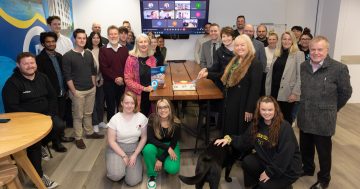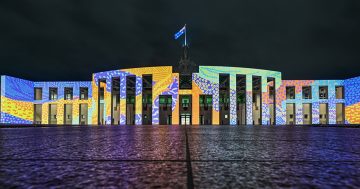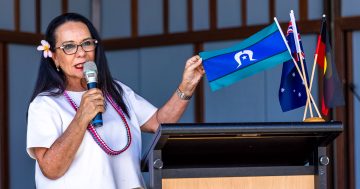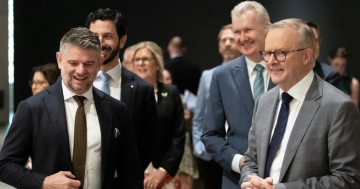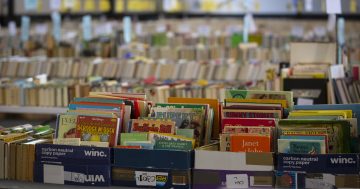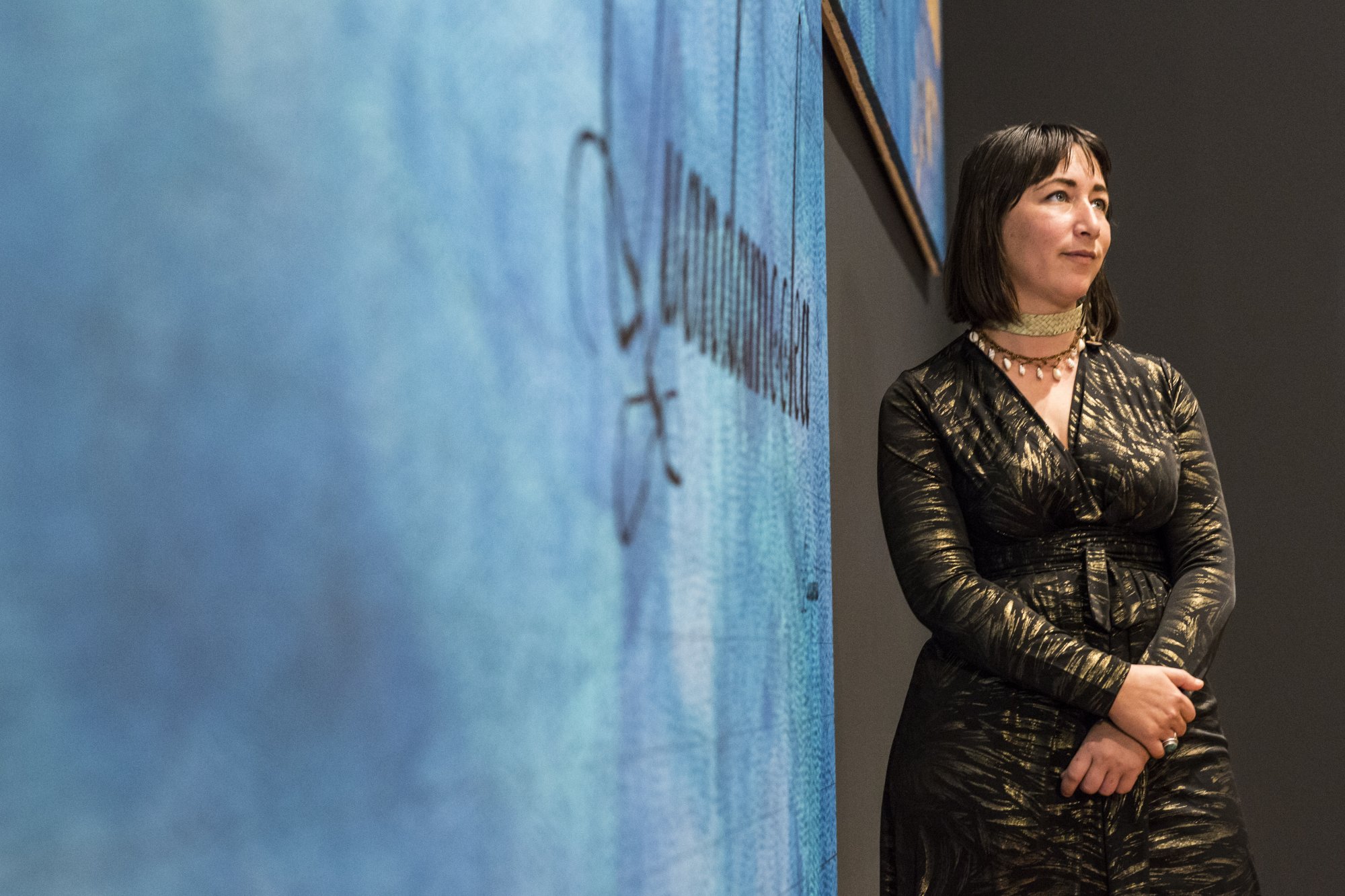
Megan Cope, Yunggulba (Flood Tide) series [Minjerriba, Mulumba, Moorgumpin, Quandamooka] 2015. Photo: National Gallery of Australia, Canberra.
Linda Burney, MP, awarded a NAIDOC Lifetime Achievement Award in 2014 and the first Indigenous woman to be elected to the House of Representatives, says of the 1967 referendum and its relevance to ‘Defying Empire’:
“This referendum was astounding. Referendums are very difficult to achieve in this country and out of the 40 odd referendums held in Australian history, there have only been six or seven that have been successful. The referendum laid the foundation for so much in Aboriginal Australia and in the broader Australian community, including much of what we see reflected in this astounding exhibition. People need to understand their stories and Australia is slowly learning to tell the truth and this exhibition is part of that truth-telling.”
‘Defying Empire‘ is a salute to ongoing indigenous defiance, and the ongoing resilience of Aboriginal and Torres Strait Islander artists since first contact with the British Empire, through the fight for recognition and continuing activism today and into the future. During the opening week of the exhibition in May, there was a full program of events, including a series of artist talks and workshops.
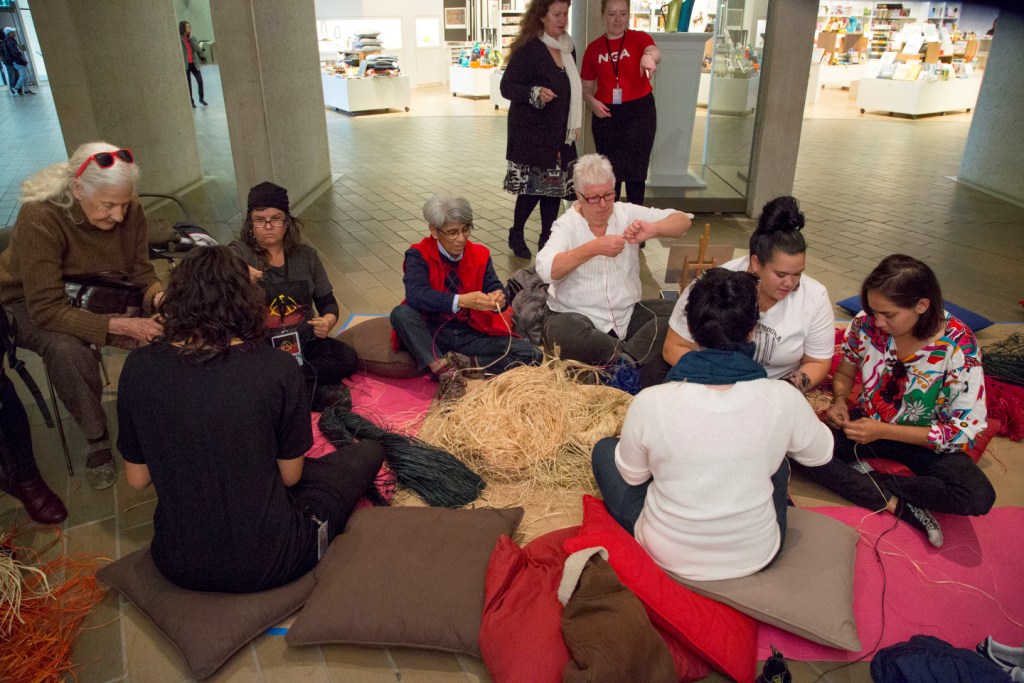
Photo: National Gallery of Australia, Canberra.
I had arranged to meet “Defying Empire’ artist Megan Cope after she spoke to a large audience in front of her work. We agreed to meet in a weaving workshop being held in the foyer of the Gallery by weavers from Quandamooka, Stradbroke Island, Queensland. It turned out the three weavers were cousins of Megan and we enjoyed a relaxed discussion about her work, weaving as we spoke.
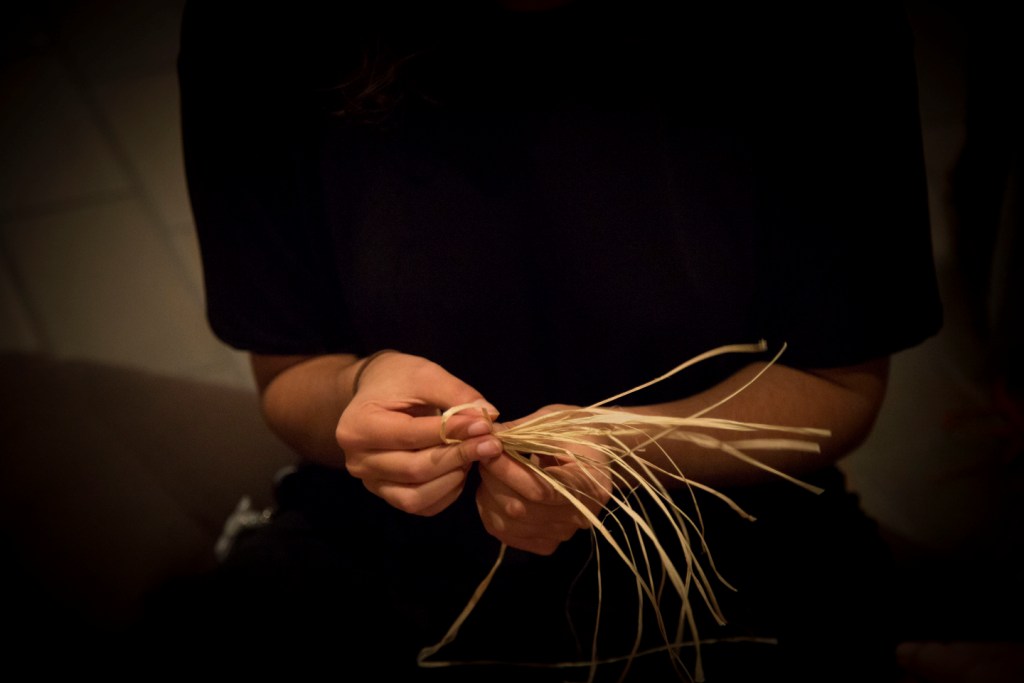
Photo: National Gallery of Australia, Canberra.
With the exhibition curated around a number of strong themes, Megan talked about her choice of ‘resistance and refusal’, incorporating wit and satire. She resists rigid notions of what resistance actually is, and her work reflects her strong feelings for her Country – her land. This is conveyed in her use of topography in her striking series of large paintings which show highly detailed aerial representations of North and South Stradbroke Island. The brilliant azure sea is rendered by thousands of small dots and it is important to stand back to appreciate how the subtle topography of the sea is represented by colour.
Megan explained the inspiration maps provided. “My work talks about reclaiming geographical places. My research started with old parish maps that showed the traditional names of the region. But these were changed after World War I when the military remapped the area and did away with the old names.”
Megan has strong ties with her family: “I go back whenever I can, but I live in Melbourne and the life of an artist is not easy.” She identifies her favourite place as Pullen Pullen, facing into Moreton Bay, recalling it has always been unspoiled. She has learned of the many changes to the islands from older relatives, who have lived through the change brought about by mining and tourism. Quandamooka Aboriginal people have an ongoing connection to North Stradbroke Island going back more than 20,000 years. That connection was formally recognized in July 2011, when the Federal Court held a special hearing at the island, recognizing the Quandamooka people as traditional owners. Since native title was granted to the Quandamooka people, they have gradually reclaimed and celebrated cultural practices that were nearly lost.
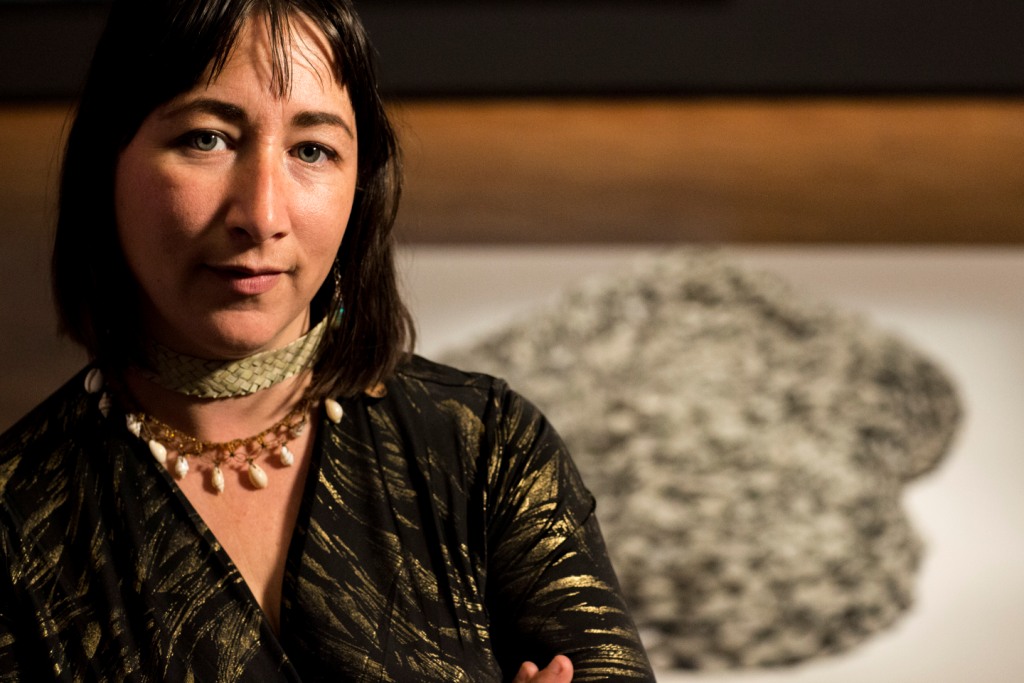
Megan Cope, RE FORMATION 2017. Photo: National Gallery of Australia, Canberra.
The centrepiece to her body of work is the large installation ‘RE FORMATION’, constructed from sand and ‘oyster shells’. The two midden-like structures incorporate the mineral ilmenite, silica sand, as well as oyster shells formed from cement and aluminium beer cans. The use of ilmenite and silica reference the long destructive industry of sand mining on Stradbroke. The colours of the aluminium cans have been arranged to form a Union Jack, a direct reference to the impact of colonization and the introduction of alcohol to the island. These reflect on the changes that have occurred to her country, with the dramatic placement forcing the viewer to manoeuvre around them carefully.
Megan’s short 8-minute video, ‘Blaktism’, examines issues of self-doubt brought about by the necessity to obtain a ‘certificate of Aboriginality’. Tina Baum, Curator of ‘Defying Empire’ says of the video:
“It is about her baptism into being recognized as an Aboriginal person. As an Aboriginal artist, you are often asked for proof of Aboriginality. She finds it an absurd notion. Megan knows who she is, her community knows who she is. She has always been an Aboriginal person and always will be.”
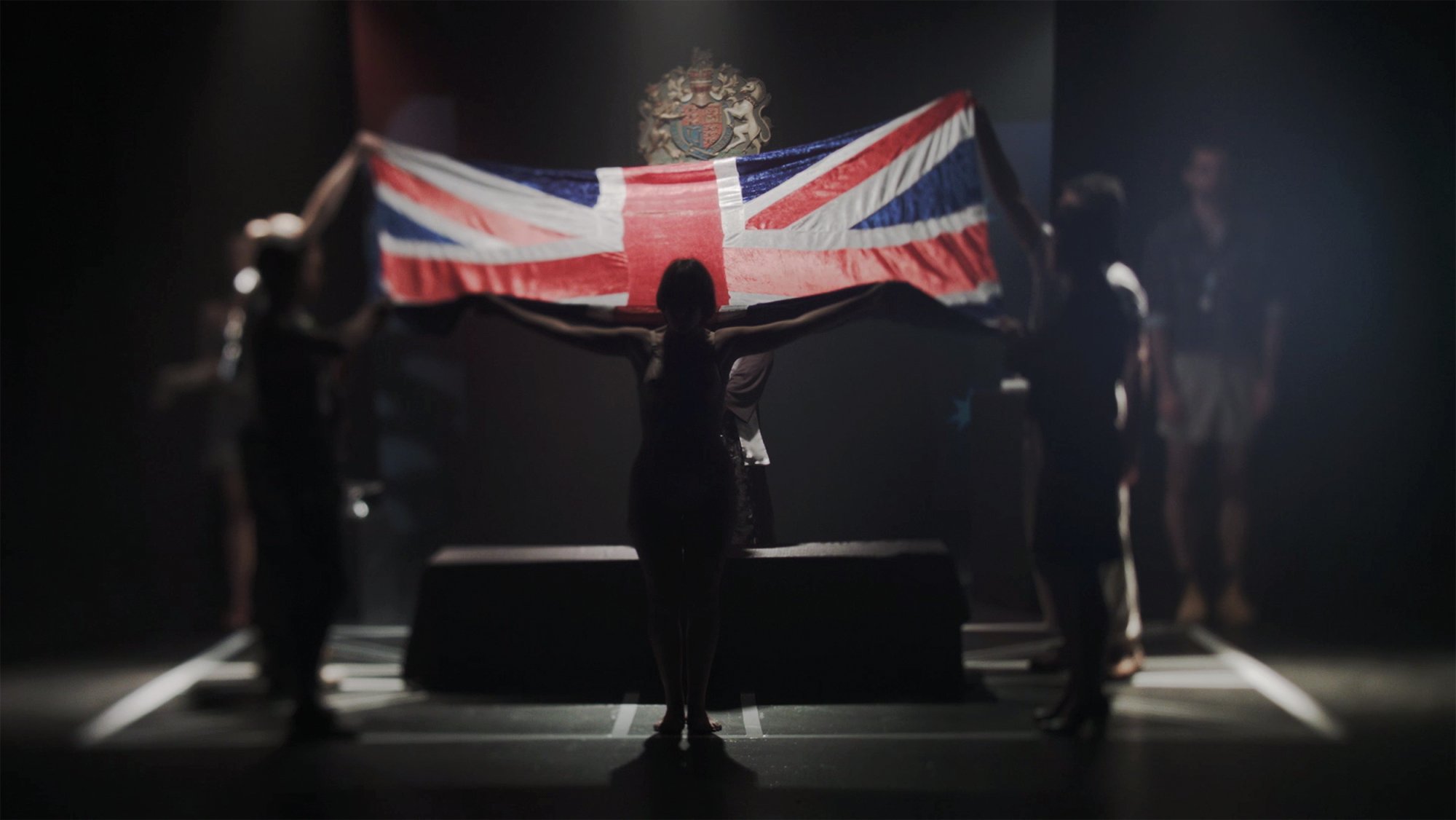
Megan Cope, The Blaktism 2014. Photo: National Gallery of Australia, Canberra, purchased 2016.
This ‘must see’ exhibition illustrates the diversity of contemporary Aboriginal and Torres Strait Islander art. Through visualizing their stories, the artists in ‘Defying Empire’ continue to challenge, raise awareness and open conversations about the shared histories of this nation.

Tony Albert, The Hand You’re Dealt 2016. Photo: National Gallery of Australia, Canberra.
As part of NAIDOC week and their school holiday programme, the National Gallery is offering a workshop for children. ‘Defying Empire’ artist Tony Albert will present a workshop in which children can use his two works in the exhibition as inspiration for creating their own works of art with playing cards, collage and found objects.












